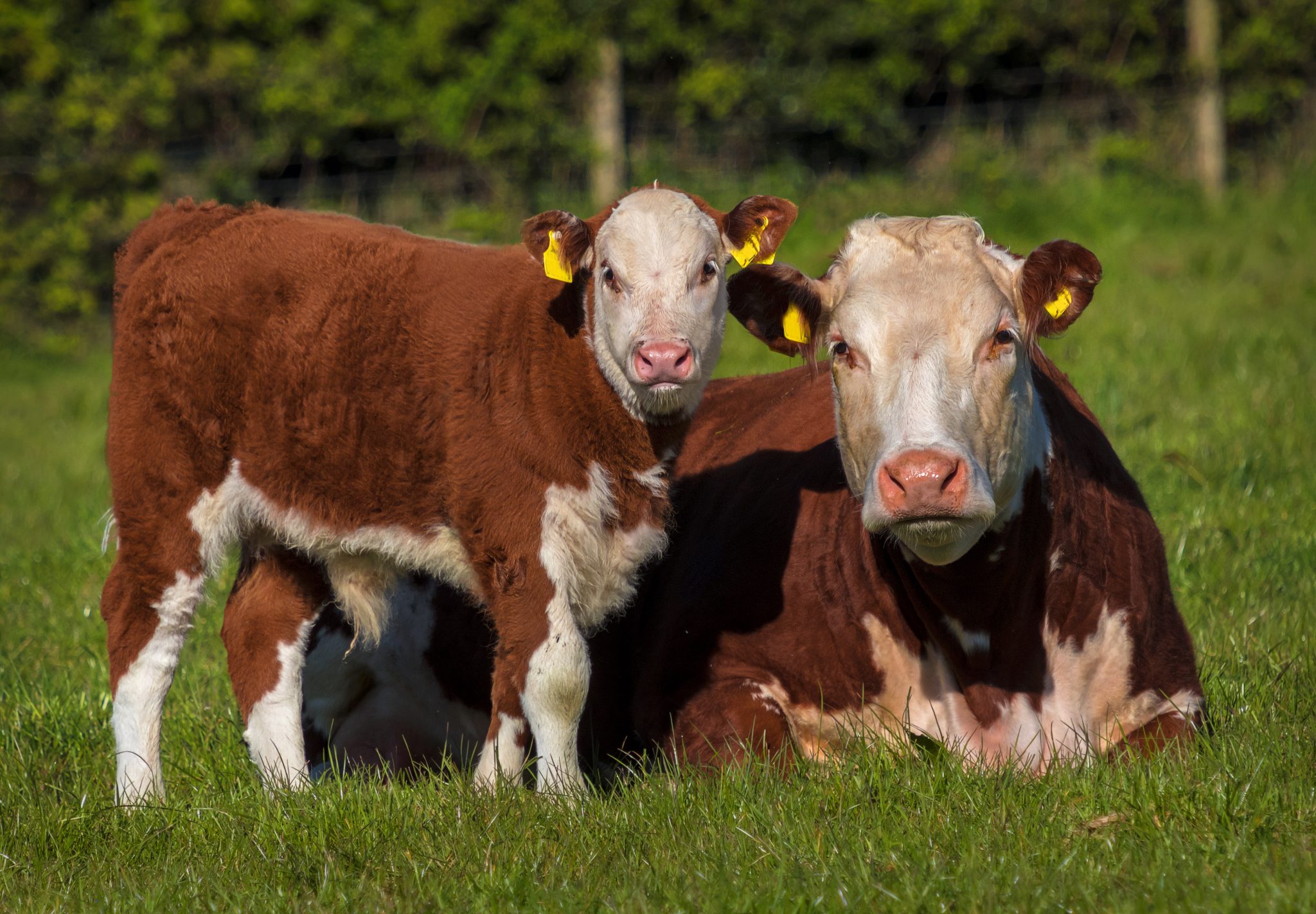Beef

Johne’s (pronounced “Yo-nees”) disease is a chronic infection caused by the bacteria Mycobacterium avium subspecies paratuberculosis (MAP). Johne’s disease usually refers to a clinical condition characterized by profuse, watery diarrhea and weight loss, while paratuberculosis refers to the condition of being infected with MAP but not showing clinical signs.
Clinical Signs
Animals are typically infected with MAP as calves but do not show any clinical signs until after a prolonged incubation period (time from infection to clinical disease). The typical incubation period is between 2 and 10 years, although about 10 percent of infected animals develop disease within a year. Clinical signs include gradual weight loss despite a normal appetite, decreased milk production, and manure that gradually becomes more fluid until it progresses into a severe pipestream diarrhea. The diarrhea may be intermittent at first. Intermandibular edema (“bottle jaw”) may be seen in the later stages of disease due to a loss of blood proteins.
Stages of Infection and Disease
Stage I: “Silent” Infection (calves, yearlings, and adult cattle)
Most cattle with Johne’s disease are infected with MAP as young calves, typically less than one month of age. The organism grows slowly in the intestines and then spreads to regional lymph nodes. Animals in stage I show no clinical signs, and they are rarely detected with even the most sensitive tests. Stage I usually lasts at least 2 years and may last longer than 10 years.
Stage II: Inapparent Carrier Adults
Animals in stage II still do not show any clinical signs, but they do shed the MAP organism in their manure and thus contaminate the environment and infect other animals.
Stage III: Clinical Disease
Animals in stage III show gradual weight loss and intermittent diarrhea, but they have a normal appetite. Stress of parturition, increased milk production, and poor nutrition can precipitate the progression into clinical disease. Animals can revert back to stage II after the inciting stressor is removed.
Stage IV: Advanced Clinical Disease
Animals are weak, emaciated, and usually have pipestream diarrhea. Bottle jaw is commonly seen in stage IV. The progression from stage II to stage IV can occur over weeks to months. Animals in stage IV usually do not live very long.
Transmission and Sources of Infection
Calves are most susceptible during their first few months of life. Older animals exposed to very high levels of MAP may also become infected, but this is rare.
Manure
The most common source of infection is manure, and therefore the most common route of transmission is fecal-oral. Most infections occur in the early neonatal period with a calf nursing a manure-contaminated teat.
Milk/Colostrum
The likelihood of transmission in the milk/colostrum increases as a cow progresses into the later stages of the disease.
In Utero
Approximately 20 to 25 percent of calves born to cattle with Johne’s disease are infected in utero.
Environment
The MAP organism can survive in the environment for about a year. As a result, water and forages can both become contaminated and serve as sources of infection.
Treatment and Vaccination
No medical treatment exists for Johne’s disease. A killed vaccine for Johne’s disease is available in some states with prior approval by the State Veterinarian. The vaccine does reduce the incidence of disease and delays the onset of clinical signs, but it does not eliminate infection. Animals must be less than 35 days old when vaccinated. Adverse vaccine reactions are common and include: 1) granuloma or abscess at the injection site (dewlap); 2) reaction to tuberculin skin tests; and 3) reaction to Johne’s disease serologic tests.
Prevention and Control
Due to the lack of treatment and a vaccine of limited use, the most effective control of Johne’s disease is implementing appropriate testing and biosecurity protocols. Talk to your regional Animal Science and Forages Extension agent and your veterinarian about Johne’s disease and the Alabama Voluntary Bovine Johne’s Disease Control Program, which is a Federal- State-Industry cooperative program that incorporates a comprehensive approach to Johne’s control into your herd health management plan. If you suspect Johne’s disease in your herd, contact your veterinarian for a thorough investigation.

